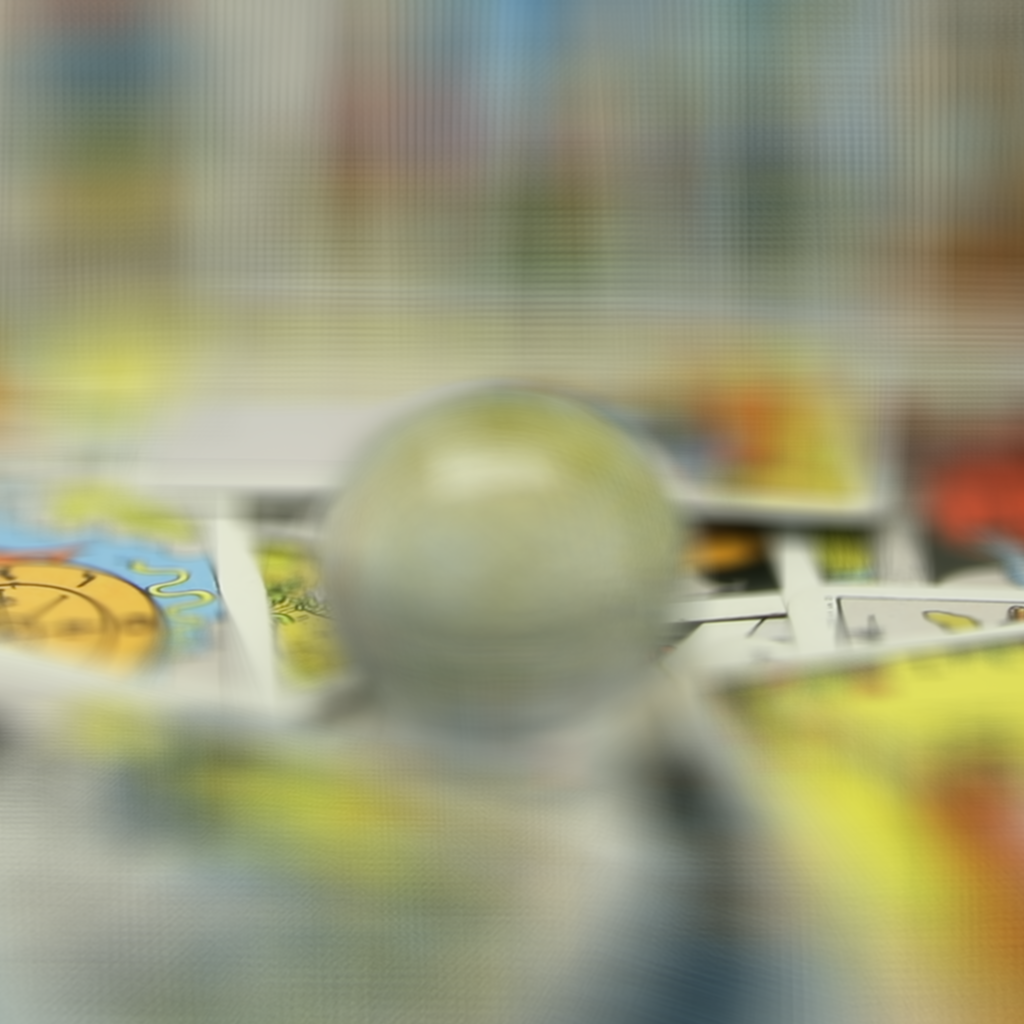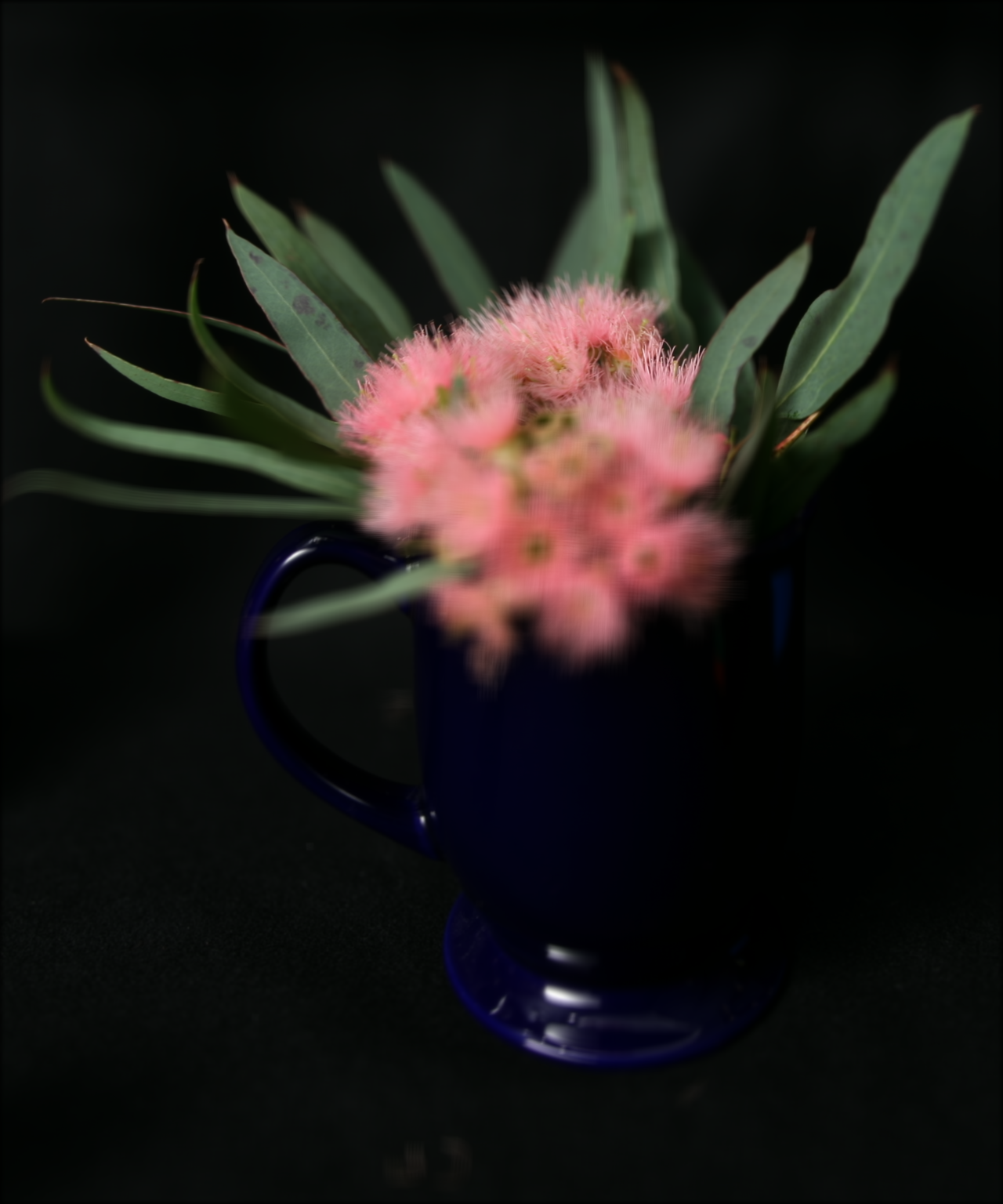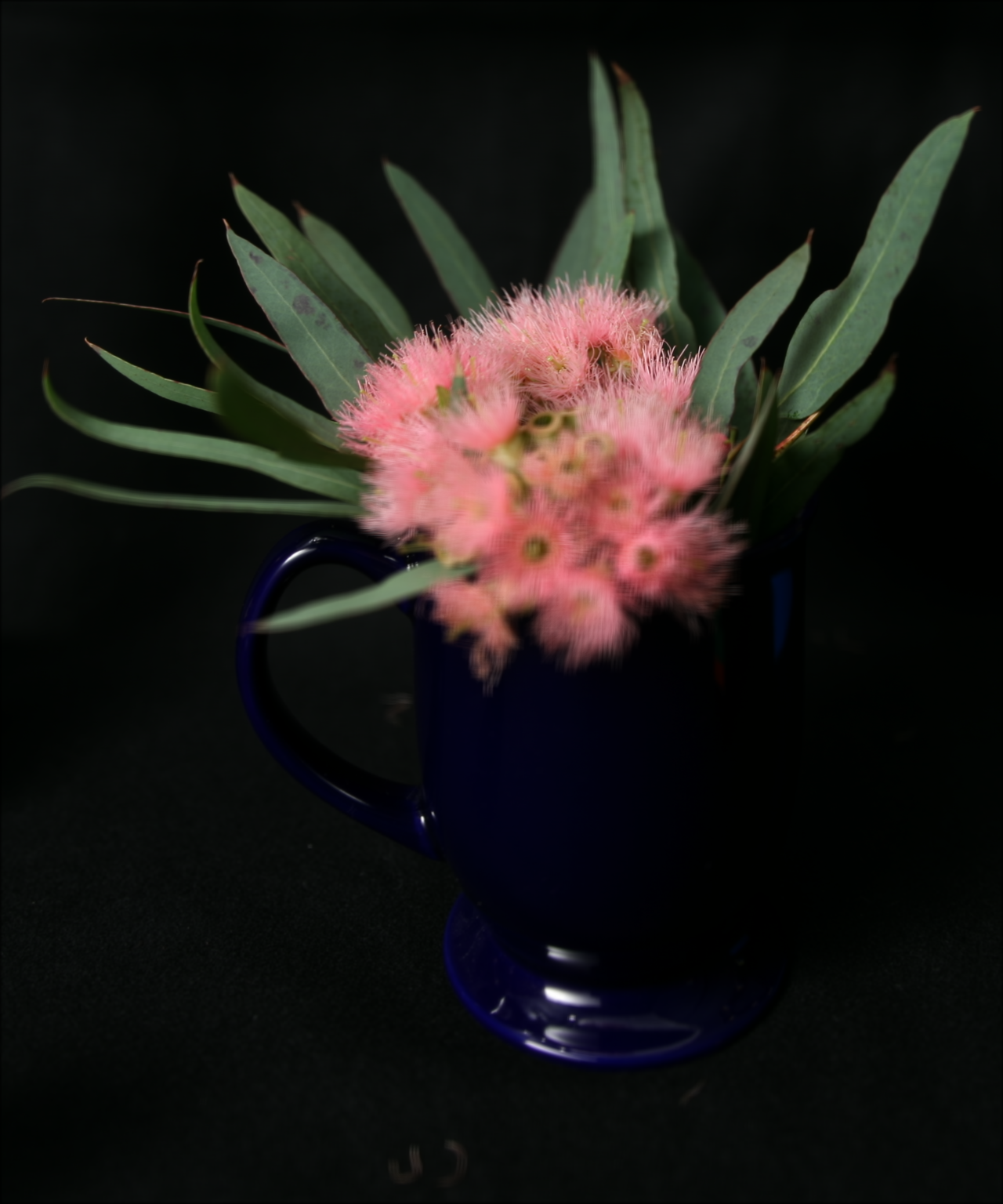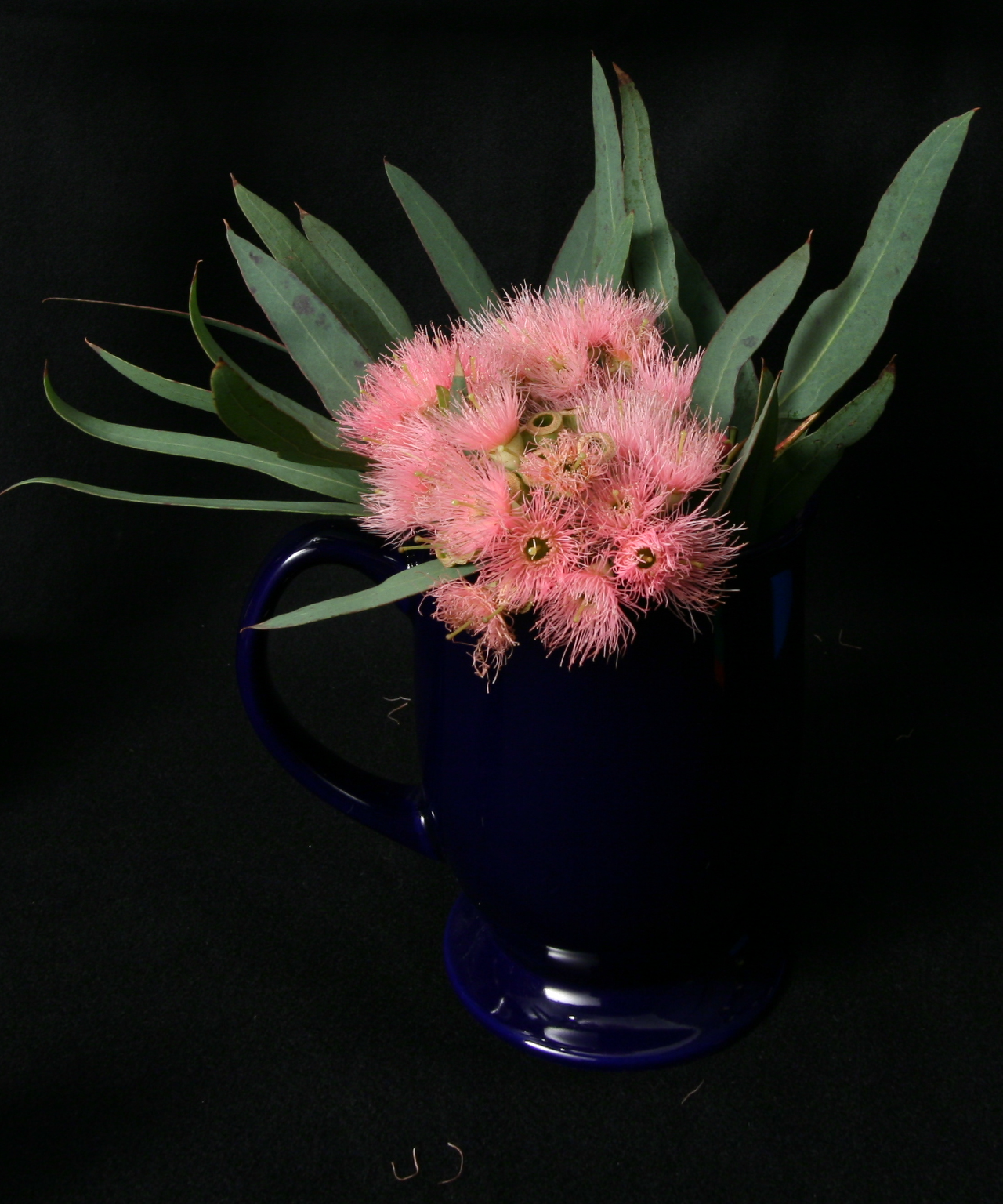Overview
Using data from Stanford's Light-Field Viewer, I shift the image data appropriately to produce variably focused results.
Florin Langer, Fall 2018
Overview
Using data from Stanford's Light-Field Viewer, I shift the image data appropriately to produce variably focused results.
Depth-Refocusing
Because objects that are farther from the camera do not vary their positions as much as closer ones do when moving the camera but maintaining the optical axis direction, simply averaging all 289 images produces a result that is only focused in the background. However, shifting images appropriately and then averaging can change the resulting focus. I shift images by their positions in the camera grid relative to the center camera (using the differences between subaperture coordinates) and multiply that by a variable within an image-specific range to vary the focus.

0, 0
|
[-0.6, 0.3], 2 via GIPHY
|
|

0, 0
|
[-0.5, 0.6], 2 via GIPHY
|
Aperture Adjustment
Averaging images sampled over a large grid perpendicular to the optical axis mimics a camera with a large aperture whereas averaging images from a smaller grid results in an image that mimics a smaller aperture. While focusing on the same point (the center of the image grid), I generate images that correspond to different apertures.
-0.5, 3 via GIPHY
|
0.3, 3 via GIPHY
|
|
-0.1, 3 via GIPHY
|
-0.4, 3 via GIPHY
|

-0.1, 8, 289
|

-0.1, 4, 81
|

-0.1, 0, 1
|
Summary
Having a light field allows for powerful manipulation of aperture and focus.